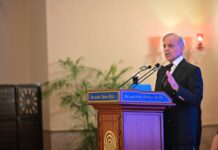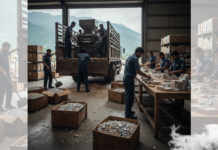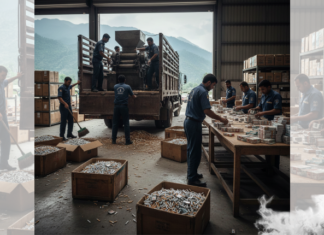LAHORE: “South Asia can become super economic hub if all indigenous resources are fully exploited and ironing out political and geographical differences among the SAARC member countries especially result oriented parlays between two nuclear-armed neighbours India and Pakistan to make the region a driving engine for the world economy.”
Inaugurating a two-day international communication workshop on “Strategies and Mechanism to optimise the external communications of the SAARC Chamber” SAARC Chamber of Commerce and Industry Pak chapter Vice President Iftikhar Ali Malik here Monday said that South Asia has a viable potential to make this region a magnet for the greater trade, investment and financial flows. He stressed the urgent need for regional economic integration in South Asia on the same of Europe, Southeast Asia and elsewhere.
Shedding light on the importance of media and communication, he said the media should play a positive and constructive role and work towards de-escalating rather than fanning tensions among member countries especially India and Pakistan.
He said South Asia has second highest intra-regional trade costs and underlined the need for a South Asian economic union with greater connectivity and forward movement on pending agreements among member states including rail, energy, highways, cargo and ferry services among our ports. “The problem is that our land, air and maritime connectivity is still very limited. Inadequate transport facility, complex procedures of customs clearances at the border, limited crossing points for entry of goods, expensive trans-shipment followed by a poor flow of payment system,” he added.
He said the intra-regional trade figures for South Asia are disappointing as trade in the region constitutes only 1.4 per cent of the total world imports and 1.2 per cent of exports, whereas merchandise trade is only 27.9 per cent of GDP, the lowest in the world. He said that world development indicators have revealed South Asia houses 1.79 billion world’s population thus representing a large workforce, tremendous business and investment opportunities.
Iftikhar said that Chamber has fully supported the government-industry partnership and remained engaged in dialogue with governments of the SAARC region. He stressed an urgent need for promotion of regional and economic cooperation in South Asia, however, political tensions and development constraints that the region has faced over the years played a decelerating role in the economic integration of South Asia.
He said the region is today confronted with serious energy crisis as per capita power consumption is among the lowest in the world and thirty percent energy demands are met through import. At the same time the presence of natural gas in Bangladesh, coal and petroleum in India and Pakistan, hydro-power in Nepal, Pakistan and Bhutan could be a basis for regionally integrated energy cooperation.
He said our history made us neighbours which cannot be changed and we should work together for the betterment and welfare of the people besides prosperity, development and progress in the region.
The SCCI founder secretary general Rehmatullah Javed also spoke on this occasion and traced the history of the chamber. Punjab University Senior Faculty Member Dr Waqar Ch representing Pakistan tabled proposals for effective communication techniques which were unanimously applauded by the participants of Sri Lanka, Nepal, Bangladesh, Afghanistan, Maldives and Pakistan.
“FUR DIE FREIHEIT” German New Delhi Regional Director Dr Ronald Meinardus conducted the workshop while Secretary-General Hina Saeed briefed the participants about the mission and objective of the chamber.























